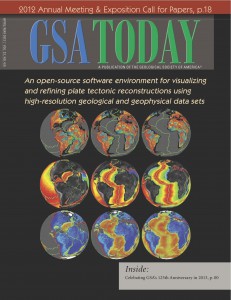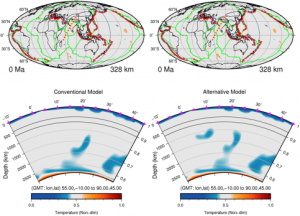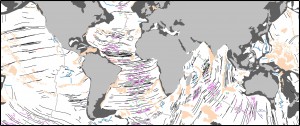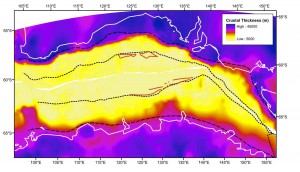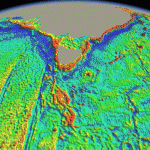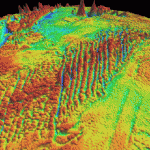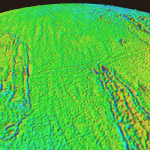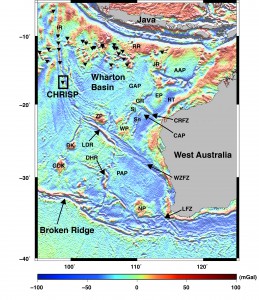 We present the Indian Ocean plate tectonic model accompanying the study of Gibbons et al., (2012). This work details the first regional-scale tectonic model of the breakup of East Gondwana. Our model shows that the breakup of East Gondwana started with the migration of a continental sliver, Argoland, in the Late Jurassic and was followed by breakup between Greater India and Australia-Antarctica in the Early Cretaceous, involving spreading reconfigurations, which left several sunken continental plateaus of Indian crust on the Australian plate. New evidence from seafloor off northwest Australia also shows that the majority of Greater India reached only about halfway up the West Australian margin, to the Wallaby-Zenith Plateaus. … Read more…
We present the Indian Ocean plate tectonic model accompanying the study of Gibbons et al., (2012). This work details the first regional-scale tectonic model of the breakup of East Gondwana. Our model shows that the breakup of East Gondwana started with the migration of a continental sliver, Argoland, in the Late Jurassic and was followed by breakup between Greater India and Australia-Antarctica in the Early Cretaceous, involving spreading reconfigurations, which left several sunken continental plateaus of Indian crust on the Australian plate. New evidence from seafloor off northwest Australia also shows that the majority of Greater India reached only about halfway up the West Australian margin, to the Wallaby-Zenith Plateaus. … Read more…
2012 Edgeworth David Medal awarded to Dr Jo Whittaker
Ex-EarthByter Dr Joanne Whittaker awarded the 2012 Edgeworth David Medal by the Royal Society of NSW. Congratulations Jo!

